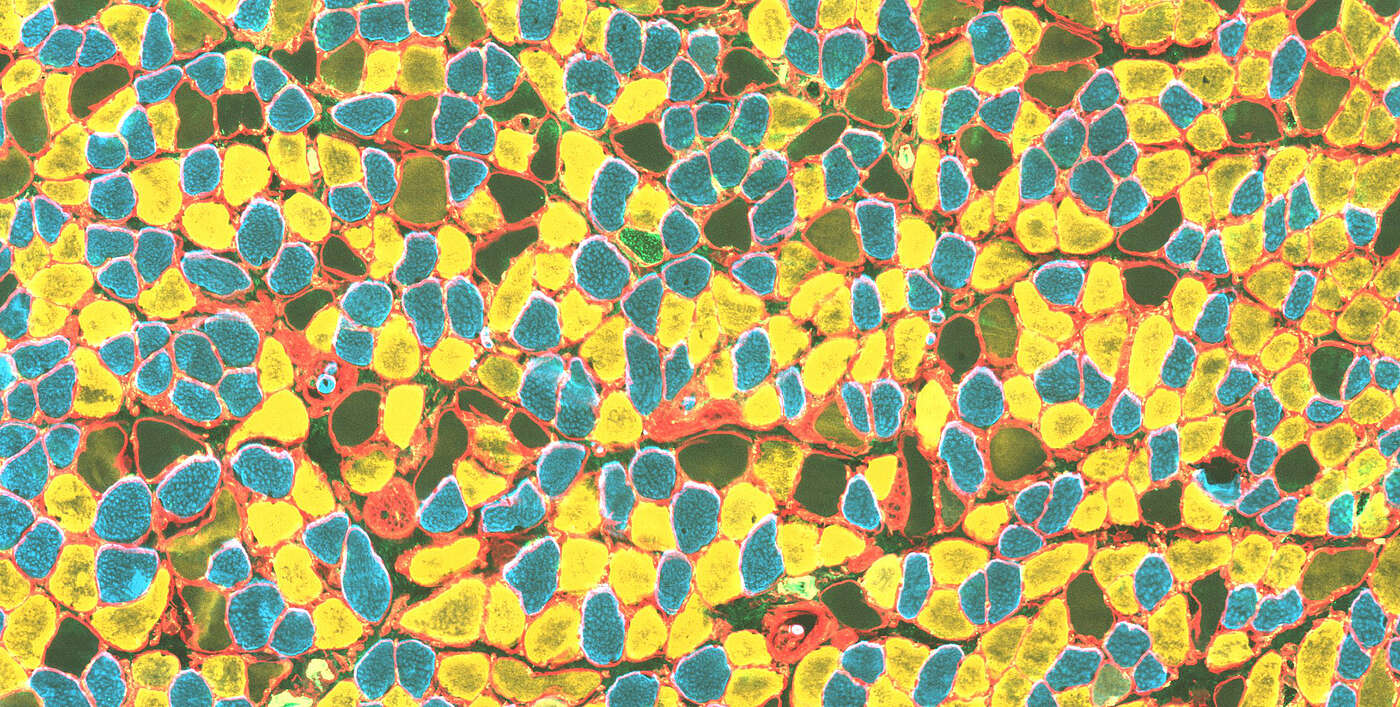We now live longer than at any point in human history, but to enjoy those extra years, we need to remain healthy, mobile and independent. With age, however, our muscles inevitably lose mass and strength. This age-related muscle loss puts an end to an autonomous lifestyle for many elderly people, who must then rely on family or the healthcare system for daily support.
Slowing age-related muscle loss
"Age-related muscle decline already occurs in our thirties but begins to accelerate at around 60. By age 80, we have lost about a third of our muscle mass," says Dr. Daniel Ham, one of the study's lead authors. "Although this aging process cannot be stopped, it is possible to slow it down or counteract it, for example through exercise." Researchers led by Prof. Markus Rüegg at the Biozentrum of the University of Basel have demonstrated in mice that both calorie restriction and the drug rapamycin have a positive effect on aging skeletal muscle. "If we can understand what happens in the muscle as we age, perhaps we can design treatments to counteract muscle aging and prevent sarcopenia."
"Both calorie restriction and rapamycin have been proposed as anti-aging interventions, but we didn't expect the two treatments to provide additive benefits," explains Dr. Nitish Mittal, another lead author of the study. Previously, it was thought that moderate fasting and rapamycin represent different means of achieving the same goal, namely suppression of the protein complex mTORC1, which accelerates aging when overactive.
Beneficial effects enhanced with combined treatment
"Contrary to our expectations, the treatments do not redundantly converge at mTORC1," emphasizes Ham. "While we could understand that calorie restriction would have beneficial effects beyond mTORC1 suppression, it was incredibly surprising to us that rapamycin, an mTORC1 inhibitor, further slowed muscle aging in calorie restricted mice, where mTORC1-activating nutrients are available for just a few hours each day.” In calorie-restricted mice treated with rapamycin, the beneficial effects were therefore additive, with mice displaying significantly better muscle function than mice receiving either treatment alone. "Compared to their peers, treated mice are more active and physically capable because their muscles remain healthy" says Ham.
Healthy muscles for longer independence
“The health of our muscle really is wealth. Beyond physical function, muscles are essential for whole-body metabolism and the proper functioning of many organs” says Mittal. The positive impact of calorie-restricted diets and rapamycin on muscle aging leads to the intriguing question of whether elderly people suffering from sarcopenia can profit from a combined therapy consisting of an mTORC1 inhibitor, a calorie restriction-mimicking drug and perhaps exercise.
"Strong and healthy muscles provide many benefits for elderly people, in fact for all of us," says Ham. "We can live an active and independent life for longer, and enjoy activities such as hiking, traveling or taking care of the grandkids." This plays a major role in life quality and satisfaction in old age and also relieves the health care burden.
Original article:
Daniel J. Ham, Anastasiya Börsch, Kathrin Chojnowska, Shuo Lin, Aurel B. Leuchtman, Alexander S. Ham, Marco Thürkauf, Julien Delezie, Regula Furrer, Dominik Burri, Michael Sinnreich, Christoph Handschin, Lionel A. Tintignac, Mihaela Zavolan, Nitish Mittal, Markus A. Rüegg. Distinct and additive effects of calorie restriction and rapamycin in aging skeletal muscle. Nature Communications; published online 19 April 2022
Contact: Communications, Katrin Bühler



